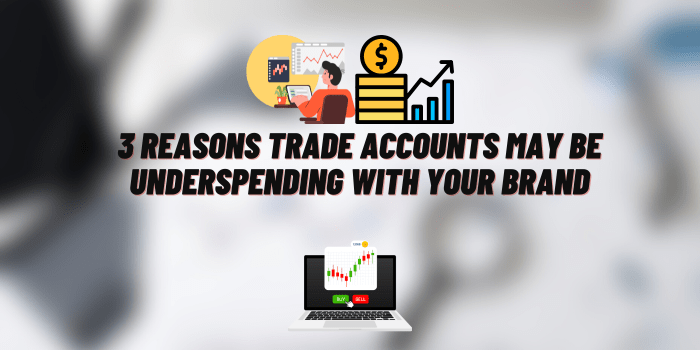Trading Signals for Forex – How to Choose a Source
Choosing a reliable source for forex trading signals is crucial to your trading success. Trading signals provide you with valuable information and insights that can help you make informed trading decisions.
Here Are Some Steps to Help You Choose a Reliable Source for Forex Trading Signals

Understand Your Needs and Goals
Determine your trading goals, risk tolerance, and trading style. Different signal providers cater to various strategies, such as day trading, swing trading, or long-term investing.
Research and Due Diligence
Research and compile a list of potential signal providers. You can find them through online searches, forex forums, or recommendations from experienced traders.
Check for Credibility and Reputation
Look for reviews, testimonials, and ratings of the signal providers. Ensure they have a positive reputation and a track record of delivering accurate signals.
Transparency and Performance History
The signal provider should have a clear and transparent performance history. Ask for a track record of their signals, showing past successes and failures. Be wary of providers who do not provide this information.
Free vs. Paid Signals
Many signal providers offer both free and paid signals. While free signals can be a good starting point, paid signals often come with better quality and reliability. Consider both options based on your budget and requirements.
Signal Frequency
Decide whether you prefer signals that are delivered daily, multiple times a day, or weekly. The frequency should match your trading style and availability.
Risk Management
Ensure the signal provider has a clear risk management strategy. Signals should come with recommended stop-loss and take-profit levels, as well as guidance on position sizing.
Trading Strategy
Verify that the signal provider’s trading strategy aligns with your own. For example, if you’re a trend trader, make sure the signals are generated using a trend-following strategy.
Customer Support
Good customer support is essential. You should be able to reach out to the signal provider for clarifications, questions, or issues.
Trial Period
Many signal providers offer a trial period or a money-back guarantee. Take advantage of this to evaluate the quality and accuracy of their signals.
Costs and Fees
Understand the costs involved, whether it’s a one-time fee, a subscription fee, or a profit-sharing arrangement. Make sure the pricing aligns with your budget.
Security and Data Privacy
Ensure that the signal provider follows security protocols and respects your data privacy. You may need to share your trading account details with them, so choose a trustworthy source.
Regulatory Compliance
Check if the signal provider operates in compliance with financial regulations in their jurisdiction. This can offer some degree of security.
Diversify Your Sources
It’s generally a good idea to use signals from multiple sources. This diversifies your risk and reduces the impact of potential inaccuracies from a single provider.
Stay Informed
Even when using signals, don’t blindly follow them. Understand the market conditions and the reasons behind the signals to make informed decisions.
Remember that no signal provider can guarantee 100% accuracy, and there is always risk involved in forex trading. You should consider using signals as a tool to supplement your own research and analysis, rather than relying on them exclusively.
Understand Your Needs and Goals

Understanding your needs and goals is a fundamental step in choosing a forex trading signal source. It helps you narrow down your options and find a provider that aligns with your specific trading objectives.
Here’s a more detailed breakdown of this step
Define Your Trading Goals
Start by clearly defining what you want to achieve with your forex trading. Are you looking for short-term gains or long-term investments? Do you want to grow your account steadily or aim for high returns at a higher risk? Understanding your goals is the first step in identifying a suitable signal source.
Assess Your Risk Tolerance
Determine how much risk you’re willing to take. Your risk tolerance will influence the type of signals and trading strategies you should follow. For example, if you have a low risk tolerance, you may prefer signals that prioritize capital preservation over aggressive growth.
Identify Your Trading Style
Are you a day trader, swing trader, or position trader? Your trading style will impact the frequency of signals you need and the time you can dedicate to trading. Different signal providers cater to different trading styles.
Consider Your Time Commitment
How much time can you commit to trading? If you have a full-time job or other commitments, you may need signals that require less monitoring and are suitable for part-time traders.
Account Size and Capital
The amount of capital you’re willing to invest in forex trading matters. Different signal providers may have minimum account size requirements, and your account size will also affect the position sizes recommended by the signals.
Knowledge and Experience
Assess your level of knowledge and experience in forex trading. If you’re a beginner, you may want signals that come with educational resources and explanations. Experienced traders might require more advanced signals.
Frequency of Trading
Determine how frequently you want to trade. Some traders prefer to make a few high-quality trades, while others are more active and trade frequently. Choose signals that match your preferred trading frequency.
Currency Pairs
Identify the specific currency pairs you want to trade. Some signal providers focus on specific currency pairs, so make sure they offer signals for the pairs you’re interested in.
Profit Targets and Stop-Loss Levels
Have a clear idea of your profit targets and the maximum losses you’re willing to tolerate. Ensure the signal provider’s recommendations align with your profit and risk management goals.
Psychological Factors
Consider your emotional and psychological characteristics as a trader. Some people can handle high-stress situations, while others prefer a more relaxed approach. Your emotional resilience will influence the type of signals that are suitable for you.
By understanding your needs and goals, you can narrow down your options and find a forex signal source that best fits your trading style and objectives. This tailored approach will increase your chances of success in the forex market.
Research and Due Diligence

Research and due diligence are critical steps when choosing a source for forex trading signals. Thoroughly investigating potential signal providers can help you avoid scams and select a reliable service.
Here’s a detailed guide on how to conduct research and due diligence
Online Search
Start by conducting an online search for forex signal providers. Look for popular and reputable sources through search engines, forex forums, social media, and trading communities.
Check Reviews and Testimonials
Look for reviews and testimonials from other traders who have used the signal provider’s services. These can provide insights into the provider’s reliability and performance. Be aware that some reviews may be biased, so check multiple sources.
Ratings and Feedback
Check for ratings and feedback on trading signal aggregator websites or forums. Websites like Forex Peace Army and Myfxbook often feature user ratings and reviews of signal providers.
Track Record
Ask the signal provider for their track record, which should show the historical performance of their signals. This record should include details like the percentage of profitable trades, drawdowns, and overall performance. Be skeptical of providers who don’t provide this information.
Real-Time Performance
In addition to historical data, see if the signal provider offers real-time performance tracking on websites like Myfxbook. This can help you assess their current performance and verify the accuracy of their claims.
Independently Verify Results
Don’t solely rely on information provided by the signal provider. Verify their trading results independently, if possible, by checking their performance on trading platforms or through a trusted third party.
Transparency
Look for transparency in the signal provider’s operations. Are they clear about their trading strategy, risk management, and fees? Transparency is a good indicator of trustworthiness.
Risk Management
Ensure that the signal provider emphasizes risk management. They should provide recommended stop-loss and take-profit levels and offer guidelines on position sizing to help you manage risk effectively.
Customer Support
Test the responsiveness of the signal provider’s customer support. Prompt and helpful customer service is essential, especially if you encounter issues or have questions.
Free Trials or Money-Back Guarantee
Many signal providers offer free trials or money-back guarantees. Take advantage of these offers to test the quality and accuracy of the signals without committing your capital.
Licensing and Regulation
Check if the signal provider operates in compliance with financial regulations in their jurisdiction. While forex signal providers may not be regulated like brokers, being aware of their legal status can provide some assurance.
Security and Data Privacy
Ensure that the signal provider follows security protocols and respects your data privacy. When sharing your trading account details with them, your data should be handled securely.
Community Feedback
Participate in trading communities and forums to seek advice and feedback from experienced traders. They may offer recommendations based on their own experiences.
Avoid Red Flags
Watch out for red flags like promises of guaranteed profits, high-pressure sales tactics, and providers who are not transparent about their strategies or fees. These are often signs of potential scams.
By conducting thorough research and due diligence, you can reduce the risk of falling victim to unreliable or fraudulent forex signal providers and increase your chances of selecting a trustworthy and effective source for trading signals.
How to Use Trading Signals Correctly?

Using trading signals correctly is essential to maximize their benefits and minimize the risks associated with trading.
Here are some steps to follow to use trading signals effectively
Understand the Signals
Before you start using trading signals, make sure you fully understand the signals you receive. Know how they are generated, the technical and fundamental analysis involved, and the trading strategy being employed.
Choose a Reliable Signal Source
Select a reputable and reliable signal provider, as discussed earlier. This is the foundation of effective signal usage.
Diversify Your Sources
To reduce risk, consider using signals from multiple sources. Diversification can help balance the potential inaccuracies or losses from a single provider.
Manage Your Risk
Always employ proper risk management strategies. Set stop-loss and take-profit levels based on the signals provided. Ensure your risk per trade is within your risk tolerance.
Position Sizing
Determine the size of your positions based on the signal provider’s recommendations and your risk management strategy. Avoid overleveraging your trades.
Keep an Eye on Market Conditions
Continuously monitor market conditions and be aware of any upcoming news events or economic releases that might affect your trades. Do not rely solely on signals; understand the broader market context.
Maintain Realistic Expectations
Don’t expect every trade to be a winner. Even the best signal providers will have losing trades. Maintain realistic expectations about the win rate and potential drawdowns.
Discipline and Patience
Stick to your trading plan and the signals you receive. Avoid making impulsive decisions based on emotions or short-term market fluctuations.
Backtest Signals
If historical data is available, backtest the signals provided by the service to evaluate their past performance. This can help you assess the provider’s effectiveness.
Paper Trading
Before risking real money, consider practicing with a demo or paper trading account using the signals. This can help you become familiar with the process without financial risk.
Maintain a Trading Journal
Keep a trading journal to record your trades, including the signals you followed, entry and exit points, and the outcome. This helps you analyze your trading performance and identify areas for improvement.
Review and Evaluate
Regularly review the performance of the signals and the signal provider. If you notice consistent inaccuracies or losses, consider reevaluating your choice of provider.
Stay Informed
Continue to educate yourself about the forex market, trading strategies, and technical analysis. Understanding the rationale behind the signals can improve your trading decisions.
Adapt and Evolve
Be willing to adapt your trading strategy based on the feedback from your trading journal and ongoing market conditions. Trading signals are a tool, not a strict rule to follow.
Risk Control in News Events
During significant economic or geopolitical events, be cautious when using signals. High volatility and unpredictable market reactions can lead to sudden losses.
Seek Professional Advice
If you’re new to trading, or if you’re unsure about certain aspects of trading signals, consider seeking advice from a financial advisor or professional trader.
Using trading signals correctly involves a combination of following signals diligently, managing risk effectively, and maintaining a disciplined and informed approach to trading. It’s essential to strike a balance between utilizing signals and making independent trading decisions based on your analysis and risk management practices.






